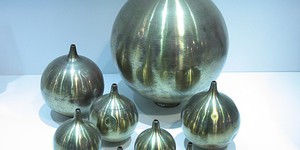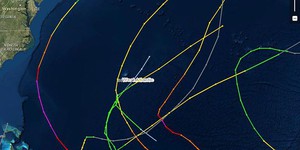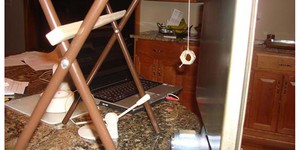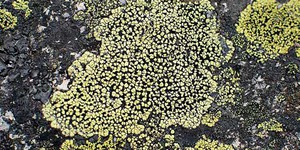Eleventh Grade Science Projects (177 results)
Science Buddies' eleventh grade science projects are the perfect way for eleventh grade students to have fun exploring science, technology, engineering, and math (STEM). Our eleventh grade projects are written and tested by scientists and are specifically created for use by students in the eleventh grade. Students can choose to follow the science experiment as written or put their own spin on the project.
For a personalized list of science projects, eleventh graders can use the Science Buddies Topic Selection Wizard. The wizard asks students to respond to a series of simple statements and then uses their answers to recommend age-appropriate projects that fit their interests.
Let us help you find a science project that fits your interests, with our Topic Selection Wizard.|
Select a resource
Sort by
|
Unlocking the three-dimensional structure of a protein is crucial to help scientists understand how it functions in our bodies and how it can cause devastating diseases if it becomes disrupted or interacts in the wrong way. However, figuring out the structure of a protein in three-dimensional space can be very challenging. Proteins are the functional units of our cells, and every protein is made up of a long chain of amino acids. Amino acids come in different shapes and sizes, and they have…
Read more
Featured
Have you heard that garlic powder is supposed to inhibit the growth of bacteria? Which do you think would make a better disinfectant: a solution of garlic powder or a solution of bleach? This project shows you a straightforward way to compare the effectiveness of different disinfectants (or other antimicrobial agents), by measuring zones of inhibition on a culture plate.
Read more
When the punter is trying to hit the "coffin corner" (within the opposing team's 10-yard line), out of bounds, what is the best angle to kick the ball for correct distance and maximum "hang time?" (For more information on the physics involved, see: Gay, 2004, Chapters 4 and 5.)
Read more
How is geology important for our energy resources? Coal, oil, and natural gas are formed by geological processes over millions of years. Certain geological formations can indicate a reservoir of coal, oil, or natural gas. Also, geothermal processes can be used as an energy resource. How are these formations identified? How are the resources extracted? You can use the National Geospatial Program to access, view, and download information from geospatial databases containing a broad spectrum…
Read more
Harmful algal blooms occur when algae, which form the base of the ocean food web, grow in massive numbers and produce toxic or harmful effects on people, fish, shellfish, marine mammals, and birds. In this project you will learn how to use archived data from continuous monitoring stations on the Chesapeake Bay to study how water quality measurements (dissolved oxygen (DO), salinity, temperature, pH, turbidity, and total chlorophyll) change before, during, and after harmful algal blooms.
Read more
Helmholtz resonance, or air cavity resonance, refers to the resonance of air in a container with a small opening, like a plastic bottle or the devices shown in Figure 1. The resonant frequency of the air depends on the volume of the air in the container and the geometry of the opening (its length and cross-sectional area). The Helmholtz frequency is not the same as the natural frequency of an air column in a cylinder, where the opening is the same size and shape as the rest of the cylinder. …
Read more
Let's suppose you can take advantage of the Internet and get a 'pen pal' located a 1000 miles away in another city. On the same night, and at EXACTLY the same time 'Universal Time', make a CAREFUL observation of where the Moon is located with respect to the background stars. You should be able to discern a slight (about 1/2 the Moon's diameter) shift in position due to parallax. Then, with a little geometry, you could estimate the distance of the Moon during the full lunar cycle (Odenwald,…
Read more
The past few years have histories of extremely powerful and dangerous storms. Storms have also become more numerous over the last few years. To investigate potential effects of climate on hurricane number and strength, in this project you will study the effects of El Niño on hurricanes. The goal of this project is to study the historic relationship between the El Niño/Southern Oscillation (ENSO) and the number and strength of hurricanes, either in the Atlantic or Pacific Oceans. Since…
Read more
Native plants are important for both ecological and medicinal reasons. However, most native plants are not very well studied. One way to know more about these plants is to understand which other species of plants they are most closely related to. In this science project you will sequence part of the chloroplast genome from a native plant and use this information to determine its evolutionary relationship to other species of plants. If the plant you chose has not been sequenced before, you can…
Read more
Noise is everywhere. From the clanking of a cowbell to the din of the lunchroom, we are surrounded by noise. Sometimes there's no way to get away from it, but there is a way to deal with it—constrained-layer damping. By simply creating a layered sandwich of somewhat flexible materials, what was once a noisy cowbell can become a "noise blanket." This science fair project shows you how to transform a noisy piece of metal into a sound-muffling constrained-layer damper. You'll record the…
Read more
Have you ever noticed an old stone wall and wondered how long it has been there? If there is lichen growing on the wall, the lichen has most likely been living there since the time the wall was made, so if you could figure out how old the lichen is then you could deduce the age of the wall. Geologies use this method, called lichenometry, and other methods to establish dates and temporal sequences as they seek to construct a history from the available evidence. In this geology science project,…
Read more
|
Explore Our Science Videos
Maglev Train Assembly Instructions
How to Measure Light with Google's Science Journal App
Ball Launcher: 2018 Engineering Challenge











